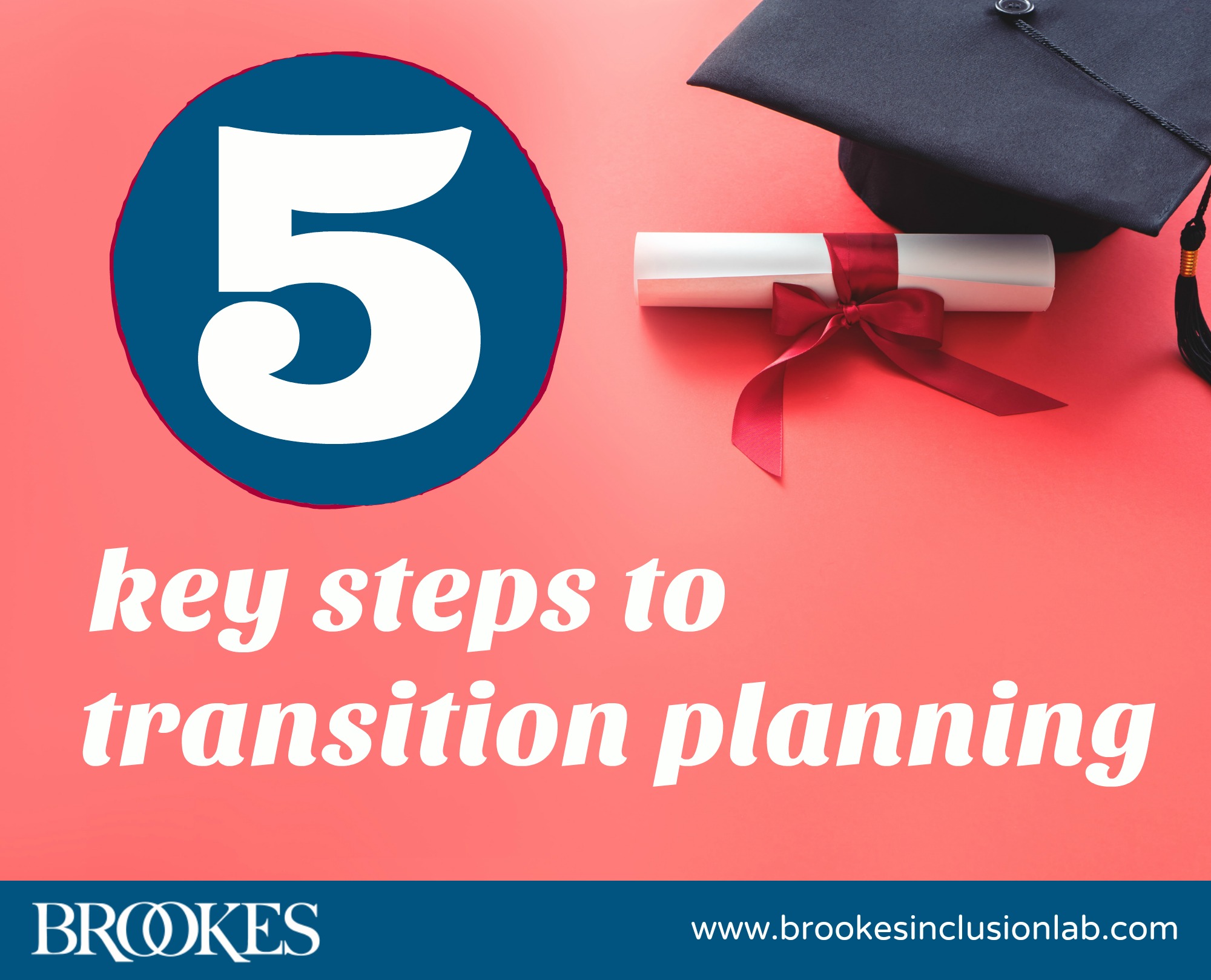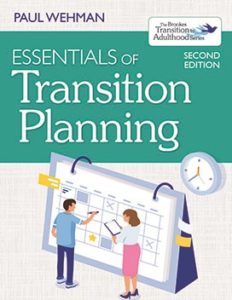5 Key Components of Effective Transition Planning
March 10, 2020
 For young people with disabilities, making the all-important transition to adulthood can be challenging—but when their support teams know the key components of effective transition planning, the process will be easier and more empowering for everyone involved. That’s what today’s blog post is all about. Excerpted and adapted from the new edition of Paul Wehman’s Essentials of Transition Planning, a one-stop guide to helping young people live fulfilling adult lives beyond the classroom, this article outlines five essential components of planning a successful transition to life after high school. If you’re a teacher or another member of a young person’s support team, keep these essentials in mind as you help your student explore the possibilities and work toward their goals and dreams.
For young people with disabilities, making the all-important transition to adulthood can be challenging—but when their support teams know the key components of effective transition planning, the process will be easier and more empowering for everyone involved. That’s what today’s blog post is all about. Excerpted and adapted from the new edition of Paul Wehman’s Essentials of Transition Planning, a one-stop guide to helping young people live fulfilling adult lives beyond the classroom, this article outlines five essential components of planning a successful transition to life after high school. If you’re a teacher or another member of a young person’s support team, keep these essentials in mind as you help your student explore the possibilities and work toward their goals and dreams.
Engage in concrete and ongoing conversations about what’s possible. Maintain high expectations for your students, listen to what they (and their family) really want, and help them envision a life where their goals and dreams can be realized. Demonstrate what’s possible by offering concrete, real-world examples of people with disabilities who have successfully navigated the transition to adulthood—and discuss the future often with students and families.
Focus on parent connections, access to peers, and information sharing. For families who are caught up in a whirlwind of day-to-day activities and challenges, “several years down the road” can seem like a lifetime away. Offer them the help and support they may need to use their child’s critical school years to prepare for adult life. Provide ample time and easily accessible forums for families to get information, ask questions, and discuss their concerns about the transition to adulthood. Also, connect students and families with others who have effectively navigated the transition process. Both students and parents can benefit enormously from spending time with peers who can share their own experiences, describe what to expect, offer real-world advice, and show that positive outcomes are within reach.
Emphasize employment, work experiences, and the student’s portfolio of work skills. The school years should be used to help students work toward competitive, integrated employment by shaping ideas about what job they would like to pursue someday. (Employment after high school is still an important consideration, even if students plan to pursue postsecondary education first.) Help your students summarize information about their likes, dislikes, support needs, and experiences, so they can easily communicate this to members of the transition team and prospective employers. Be sure that your students’ IEP goals are stepping stones that help lead to the outcome of employment. Help connect your students with work experiences in real businesses where they develop skills, explore different careers, and determine which type of environment and work culture would best suit them.
Focus on community engagement, resources, and supports. Awareness of available resources is a critical component of effective transition planning process—but too often, families receive fragmented or incomplete information about a particular service, resource, or support. School personnel may only refer families to agencies that they personally know of or feel to be relevant to the student in question, which can limit potential opportunities for support. Widen your net to include all available community resources and services, and provide information to parents that shows how these supports might be relevant to their own situation.
Foster self-efficacy and goal-setting. Improving goal-setting skills and building self-efficacy (seeing themselves as capable people) are two important themes for students as they approach the transition to adulthood. These two elements also build on each other—that is, when someone knows how to set and achieve goals, they gain an important sense of themselves as a capable person.
Here are five key steps to follow when helping young adults set goals and build self-efficacy:
- Observe, identify and listen to your student’s interests, because interests often lead to goals for the future. Help them explore what each interest means in terms of job skills and environments, connect them with other people who do jobs related to that interest, and explore local opportunities for learning about (or even doing) that kind of work. After your student has looked into several options, you might help them create a graphic chart that compares the positives and negatives of each one.
- Model the goal-setting process. Show your student what you do when you set a goal, decide which steps are necessary to achieve that goal, and develop a timeline for successfully achieving your goal. Also, point out the ups and downs you might have had along the way.
- Help them with an action plan. Once you’ve established a few things your student is interested in doing, assist your student in creating a plan of action to achieve their goals. Help your student create a visual timeline of small steps they want to accomplish in the future. Seeing small steps checked off will not only help them focus on planning and achieving their goals, it will also build positive energy and confidence.
- Use small steps to encourage and support bigger things. For example, your student might job shadow someone doing the kind of work that interests them, and then volunteer in that setting in some capacity.
- Always applaud effort. Positive feedback is essential. Applaud your students when they make an effort, and look for authentic opportunities to say things like, “I’m really impressed—I can see you are working hard on this!” When young adults recognize these as true statements, it will help them believe in their own competence and see themselves as successful people.
Use the guidelines in this post as some basic rules of thumb as you help young people with disabilities prepare for life beyond the classroom. And for more in-depth guidance and strategies on supporting young adults with disabilities…
EXPLORE THE BOOK
 Essentials of Transition Planning, Second Edition
Essentials of Transition Planning, Second Edition
By Paul Wehman, Ph.D., with invited contributors
The new edition of this popular how-to guidebook gets transition teams ready to help students with disabilities plan the future they want, pursue employment and/or higher education, and navigate the complex shift to adult life in the community. Renowned expert Paul Wehman and a select group of contributors introduce you to all the fundamentals of transition planning, offering fast facts, vivid examples, realistic case studies, and checklists and tools for putting your plan into action.
LEARN MORE NOW



Write a Comment
Your email address will not be published. Required fields are marked *
Post a Comment